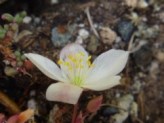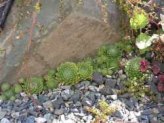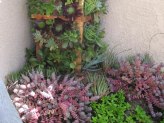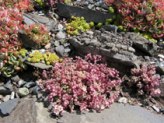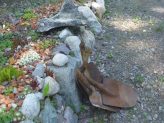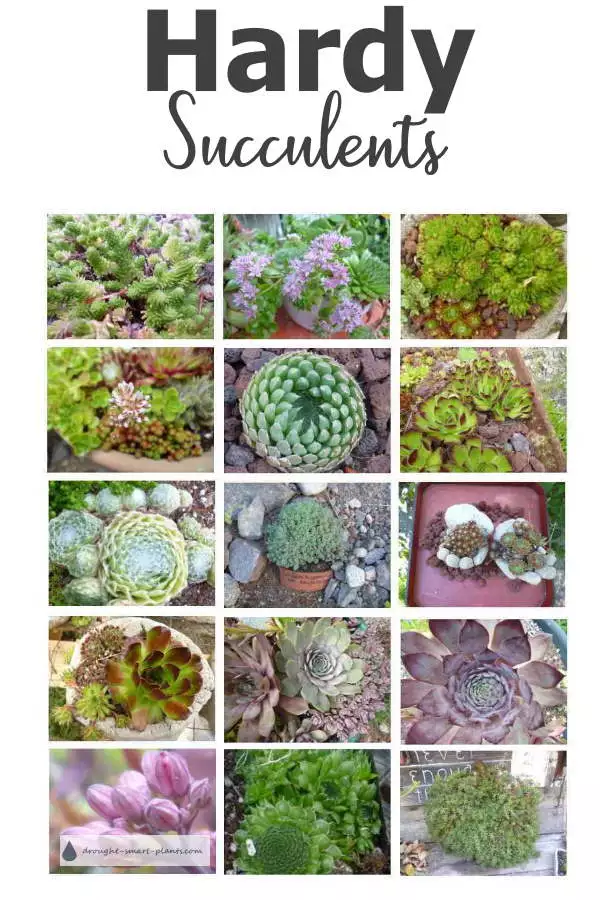Precious, Tough, and Beautiful Plants
Once a gardener finds out firsthand the fascination of growing some of the easier hardy succulent plants such as Sempervivum, Jovibarba, and Sedum, the challenge is to grow some of the rare hardy succulents.
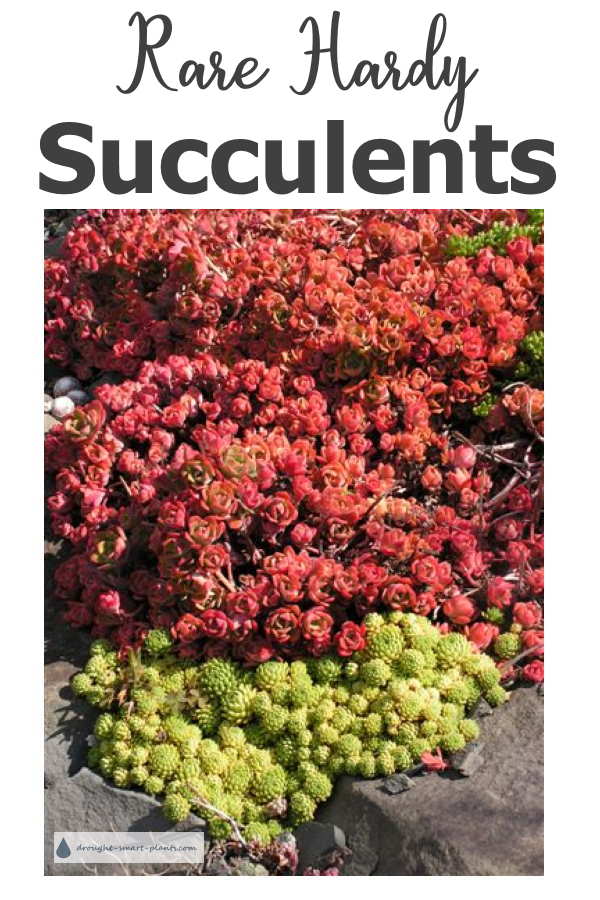
There are many lovely hardy succulent plants that are commonly grown in gardens all over the world.
All across Europe, North America, and even in Australia there are xeric gardens, rockeries, and troughs filled with alpine plants and hardy succulents.
You hardly ever find these kinds of plants in regular nurseries and garden centers as they are only known to avid collectors of uncommon plants.
My collection of hardy succulents, rare and otherwise, continues to grow as I find out more about them and scour the internet for sources.
Once the taste is formed for these incredible plants, it becomes an obsession to grow more of them.
Here are some of the rare hardy succulents on my wish list:
Jovibarba, the other Hens, and the Chicks
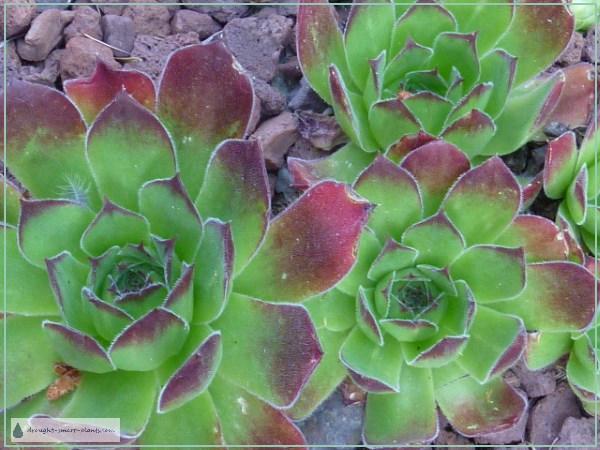
Jovibarba heuffelii are unusual relatives of Sempervivum, and look quite similar; however, their method of increasing is unusual in that they don’t form chicks, the crown instead splits into several crowns, which have to be surgically separated to propagate them.
This feature is interesting in its own right, but also explains why these plants are rare in the trade, and expensive.
I’ve had great success producing them from seed, which although slower, is a lot of fun.
There are many other species of Jovibarba, and they are now so mixed up in the trade that they are impossible to identify with any certainty.
They also interbreed as they’re so closely related and so now most have mixed blood of some kind.
They keep being re-classified as another species of Sempervivum, not a separate genus.
Whatever their genetic background it’s worth trying to find these as they provide a different texture, and, as an added bonus, they’re extremely hardy.
Once you have some experience with Sempervivum and Jovibarba, move on to these more demanding additions to the xeric garden:
Orostachys – jewels in green tones
Orostachys has been identified as the hardiest of all plants that use the Crassulacean Acid Metabolism, or CAM system where they can live and actually photosynthesize at very low temperatures, even as low as -40 degrees Celsius.
Virtually all Orostachys are worth growing – although they have quite particular requirements and will pout if these aren’t met, more and more succulent plant gardeners are taking up the challenge.
Orostachys fimbriata – a beautiful soft green with the lowered center typical of the genus, changing to a cranberry color as colder weather arrives in the fall.
Orostachys eburnea – the long slender outer leaves encircle the sunflower-like center.
One of my favorite rare hardy succulents, Orostachys spinosus, although challenging to find the right conditions and placement will reward the committed with a tall bloom stalk covered with creamy white blossoms.
The tiny green Orostachys minute is sometimes listed as a subspecies of O. spinosus.
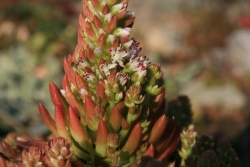
See this interesting post about Orostachys pollination for more information, and some really spectacular pictures of the flowers.
Sadly, once the seeds are set the rosette will die as these plants are monocarpic, so collect the seedpods to start a new crop with seed propagation.
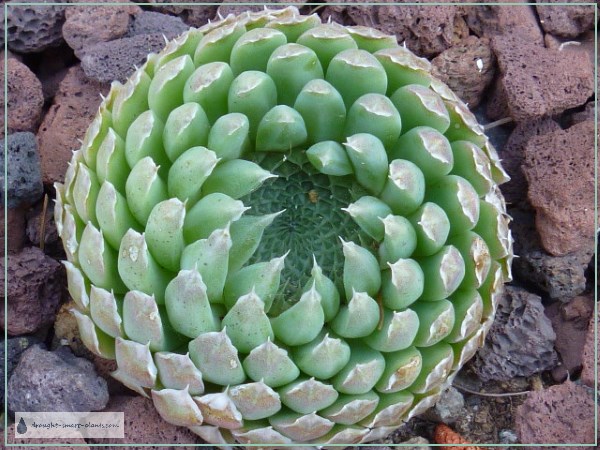
Rhodiola is another genus with some fascinating plants; R. trollii resembles Sedum so closely that you would be forgiven for mistaking it.
These little plants are perfect for troughs, rockeries, and other miniature displays.

Rosularia; odd little succulents
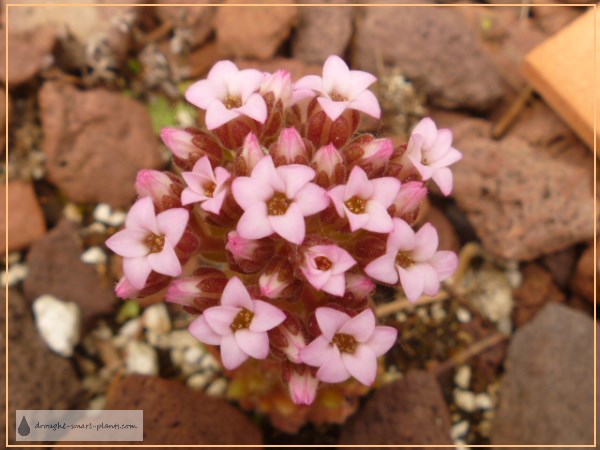
Rosularia of many types have long been grown in rock walls, rock gardens, and trough gardens but only recently have they caught the fancy of less cliquey gardeners.
As a complimentary plant to taller growing alpine plants, hardy succulents, and drought-tolerant perennials they are unmatched.
As an added bonus, they are polycarpic – meaning the rosette lives on after flowering to bloom again.
Most if not all the other hardy rosette-forming succulents have the tendency of dying after flowering, making it a challenge to keep their beauty going in the garden.
Rosularia sempervivoides – named for its similarity to its cousin, the Sempervivum, this species has striking red to dark pink flowers on long arching stems over pale blue rosettes.
Rosularia rosulata – I’ve been fortunate to obtain seed through a seed exchange with the Alpine Garden Club of B.C. which holds this event every year.
Rosularia serpentinicum is another nice little oddity, with bright lime green flushed orange foliage. These rosettes are only the size of a dime – they can form an extensive colony as it creeps along the ground.
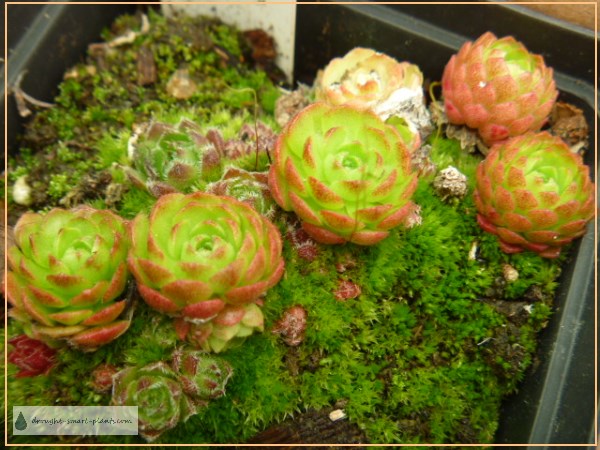
The seed exchange is included in the cost of membership which is $25.00 annually – well worth the price.
I highly recommend joining alpine gardening clubs, as they are among the most generous of gardeners, their only wish is to make more highly obsessed gardeners out of novices.
As you gain more knowledge and experience of all succulent plants I hope you’ll join me in the quest to grow more of these rare hardy succulents as they leave the realm of specialty growers and nurseries and become more commonly grown.
Love this post. Pin it for later right here;

You might like these
Sedum matrona – stonecrop for borders and beds
Sedum matrona is as the name suggests, rather motherly and robust; the unusual tone of the foliage combines well with other hardy succulents with Matrona as a sturdy and robust backbone…
10 Best Hardy Succulents for Landscaping; my recommended xeric plants
There are the 10 Best Hardy Succulents for Landscaping; if you’re starting out, these are fool proof, iron tough and gorgeous xeriscape plants to start with….
Hardy Succulents; tough and reliable in cold winter climates
Grow the Hardy Succulents that I recommend in your garden; you’ll be amazed at their toughness, and beauty…


